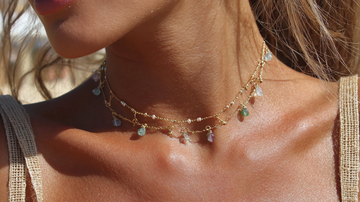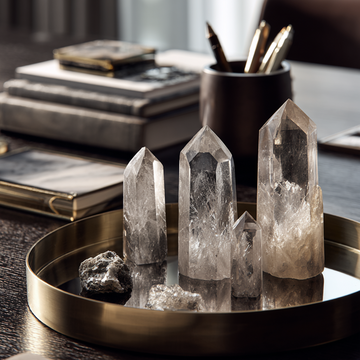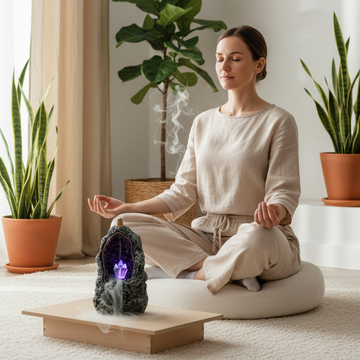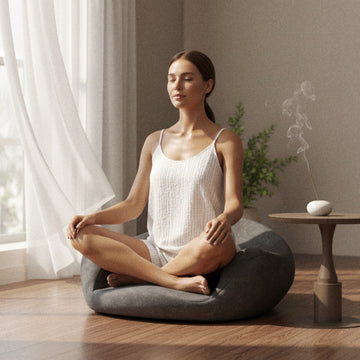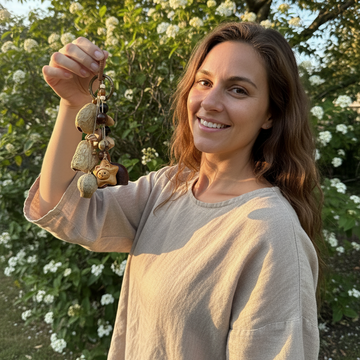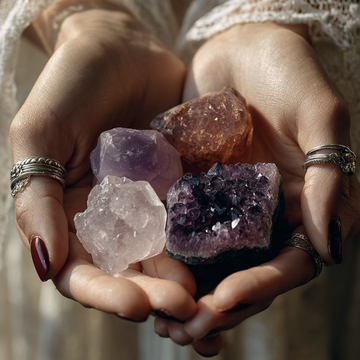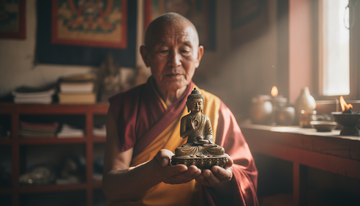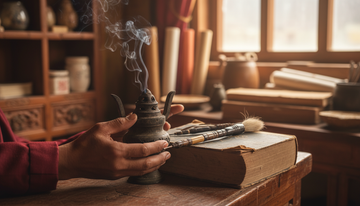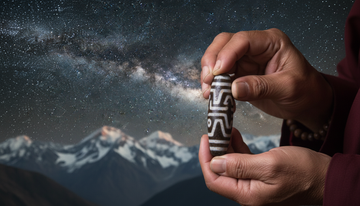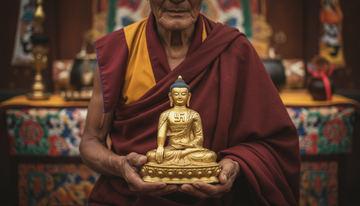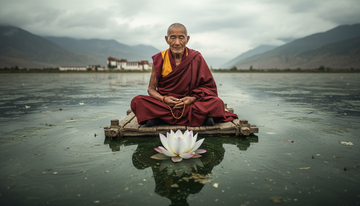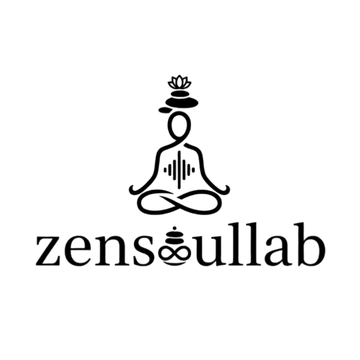Have you ever had a moment where your gaze lingers on a Buddha statue, maybe in a quiet garden or while browsing our collections at zensoullab? There's an undeniable sense of peace. But have you ever paid close attention to the hands? Sometimes they are resting gently in the lap, other times one is raised, or perhaps another is reaching down to touch the earth.
These aren't just artistic poses. They are an ancient and sacred language known as "Mudras."
More than just gestures, Mudras are expressions of the Buddha's state of mind and his teachings. Each one tells a story and channels a specific energy. To understand the Mudras is to be given a key, one that unlocks a deeper connection to the statue's inner world.
Today, let's explore five of the most common and captivating of these hand gestures together.
1. Dhyana Mudra — The Gesture of Meditation
-
The Pose: This is the classic "meditation" pose we all recognize. The Buddha is seated, with both hands resting in the lap, palms facing up, one hand on top of the other. The tips of the thumbs gently touch.
-
The Story: What you're seeing is a depiction of the Buddha in deep meditation right before his enlightenment under the Bodhi tree. This gesture is a symbol of absolute inner balance and tranquility. The overlapping hands form a bowl, symbolizing that one is open and receptive to all the wisdom of the universe, while simultaneously emptying the mind of all distractions.
-
What It Offers You: When you feel scattered or overwhelmed, gaze upon this Mudra. It's a silent reminder to look inward—all the answers and peace you seek are already within you.
2. Bhumisparsha Mudra — The Gesture of Witnessing
-
The Pose: The Buddha's left hand rests in his lap, while his right hand hangs over his knee, fingers gently touching the ground.
-
The Story: This captures one of the most powerful moments in the Buddha's life. As he was on the verge of enlightenment, the demon Mara came to challenge his worthiness. Instead of arguing, the Buddha simply reached down and touched the earth, as if to say, "The Earth is my witness." The ground itself is said to have trembled in acknowledgment, and Mara vanished.
-
What It Offers You: This Mudra is filled with the energy of unshakeable faith and resolution. It represents truth, enlightenment, and the power of perseverance. It tells you that when you are on a path of truth, the entire universe has your back.
3. Vitarka Mudra — The Gesture of Teaching
-
The Pose: The right hand is held up, with the tip of the thumb and index finger touching to form a circle. The other three fingers point upwards.
-
The Story: That circle represents the Wheel of Dharma, perfect and complete. It depicts the moment the Buddha gave his first sermon after his enlightenment. It's a gesture of teaching and intellectual discussion, symbolizing the unending flow of wisdom.
-
What It Offers You: The Vitarka Mudra encourages us to learn, to question, and to share knowledge. Wisdom isn't meant to be hoarded; it shines brightest when it is discussed and passed on.
4. Abhaya Mudra — The "Don't Be Afraid" Gesture
-
The Pose: The right hand is raised, palm facing outward, fingers extended upwards. It's a gesture we instinctively understand as "stop" or "have no fear."
-
The Story: As legend has it, a raging elephant was sent to attack the Buddha. While others panicked, the Buddha simply held up his hand in this gesture. The elephant immediately calmed, stopping in its tracks and kneeling before him.
-
What It Offers You: This Mudra is the ultimate symbol of protection and compassion. It radiates an energy that says, "Let go of fear. You are safe. All is well." At zensoullab, we feel a statue with the Abhaya Mudra brings a profound sense of peace and courage into a home.
5. Varada Mudra — The Gesture of Granting Wishes
-
The Pose: Similar to the Abhaya Mudra, but the hand is lowered, pointing downwards with the palm facing out.
-
The Story: This is the gesture of giving, charity, and fulfilling wishes. It symbolizes the Buddha's compassion and his desire to offer his merits to all beings. The open palm represents his boundless generosity and sincerity.
-
What It Offers You: This Mudra is a beautiful reminder that one of the deepest joys in life comes from giving. Whether it's material help or a simple act of kindness, generosity always flows back in unexpected ways.
The next time you see a Buddha statue, I hope you'll not only appreciate its artistic beauty but also understand the silent language of its hands. Each Mudra is an invitation from ancient wisdom—an invitation to find our own inner peace, strength, wisdom, fearlessness, and compassion.

